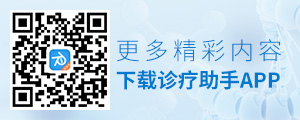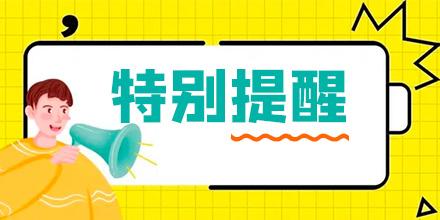抗胆碱能药物和A型肉毒杆菌毒素被用于治疗急迫性尿失禁,但目前尚需要直接比较这两种治疗的数据。
我们进行了一项双盲、双安慰剂对照的随机试验,试验纳入了患特发性急迫性尿失禁,每3天发作急迫性尿失禁≥5次(在日记中记录)的女性。在6个月期间,我们将参与者随机分配接受每日口服抗胆碱能药物(索利那新,初始5 mg,可能增至10 mg,如有需要接下来改为曲司氯铵XR 60 mg)加逼尿肌内注射(生理)盐水一次或逼尿肌内注射100 U A型肉毒杆菌毒素一次加每日口服安慰剂。主要转归为在6个月期间每日的急迫性尿失禁平均发作次数较基线时的减少值(按每月提交的3天日记中的记录)。次要转归包括急迫性尿失禁完全缓解、生活质量、导尿管使用以及不良反应。
在进行随机分组的249名女性中,247名接受了治疗,241名有可用于主要转归分析的数据。在6个月期间,抗胆碱能组每日急迫性尿失禁发作次数由基线时的平均每天5.0次平均减少3.4次,A型肉毒杆菌毒素组平均每天减少3.3次(P=0.81)。分别有13%和27%的女性报告急迫性尿失禁完全缓解(P=0.003)。两组急迫性尿失禁患者的生活质量均有改善,没有显著组间差异。抗胆碱能组口干的发生率更高(46%对31%,P=0.02),但2个月时的导尿管使用率(0%对5%,P=0.01)和尿路感染发生率更低(13%对33%,P<0.001)。
口服抗胆碱能治疗和注射A型肉毒杆菌毒素与急迫性尿失禁每日发作频率降低程度相似有关。接受A型肉毒杆菌毒素组发生口干的可能性较小,出现急迫性尿失禁完全缓解的可能性更大,但一过性尿潴留和尿路感染发生率更高。
Anticholinergic Therapy vs. OnabotulinumtoxinA for Urgency Urinary Incontinence
Background
Anticholinergic medications and onabotulinumtoxinA are used to treat urgency urinaryincontinence, but data directly comparing the two types of therapy are needed.
Methods
We performed a double-blind, double-placebo–controlled, randomized trial involvingwomen with idiopathic urgency urinary incontinence who had five or more episodesof urgency urinary incontinence per 3-day period, as recorded in a diary. For a6-month period, participants were randomly assigned to daily oral anticholinergicmedication (solifenacin, 5 mg initially, with possible escalation to 10 mg and, ifnecessary, subsequent switch to trospium XR, 60 mg) plus one intradetrusor injectionof saline or one intradetrusor injection of 100 U of onabotulinumtoxinA plus dailyoral placebo. The primary outcome was the reduction from baseline in mean episodesof urgency urinary incontinence per day over the 6-month period, as recorded in3-day diaries submitted monthly. Secondary outcomes included complete resolutionof urgency urinary incontinence, quality of life, use of catheters, and adverse events.
Results
Of 249 women who underwent randomization, 247 were treated, and 241 had dataavailable for the primary outcome analyses. The mean reduction in episodes of urgencyurinary incontinence per day over the course of 6 months, from a baselineaverage of 5.0 per day, was 3.4 in the anticholinergic group and 3.3 in the onabotulinumtoxinAgroup (P = 0.81). Complete resolution of urgency urinary incontinencewas reported by 13% and 27% of the women, respectively (P = 0.003). Quality of lifeimproved in both groups, without significant between-group differences. The anticholinergicgroup had a higher rate of dry mouth (46% vs. 31%, P = 0.02) but lowerrates of catheter use at 2 months (0% vs. 5%, P = 0.01) and urinary tract infections(13% vs. 33%, P<0.001).
Conclusions
Oral anticholinergic therapy and onabotulinumtoxinA by injection were associatedwith similar reductions in the frequency of daily episodes of urgency urinary incontinence.The group receiving onabotulinumtoxinA was less likely to have dry mouthand more likely to have complete resolution of urgency urinary incontinence buthad higher rates of transient urinary retention and urinary tract infections. (Funded bythe Eunice Kennedy Shriver National Institute of Child Health and Human Developmentand the National Institutes of Health Office of Research on Women’s Health;ClinicalTrials.gov number, NCT01166438.)
本站所注明来源为"爱爱医"的文章,版权归作者与本站共同所有,非经授权不得转载。
本站所有转载文章系出于传递更多信息之目的,且明确注明来源和作者,如果您认为我们的转载侵犯了您的权益,请及时通过电话(400-626-9910)或邮箱(zlzs@120.net)通知我们,我们将第一时间处理,感谢。





